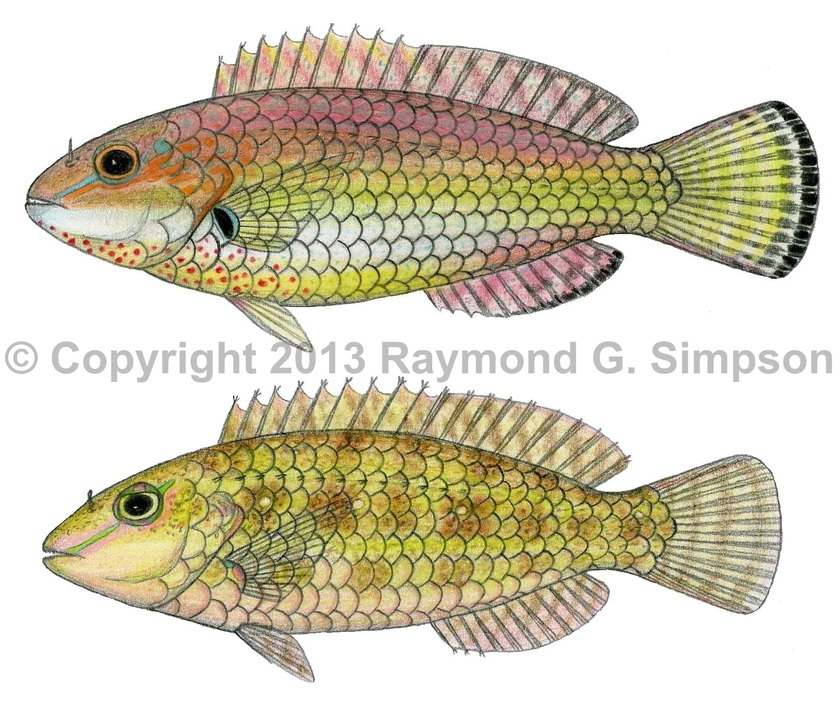
Common Name
Bucktooth Parrotfish
Year Described
Valenciennes, 1840
Identification
Dorsal Fin: IX, 10
Anal Fin: III, 9
Pelvic Fin: I, 5
Pectoral Fin: 13
Gill Rakers: 10-13 (first arch)
A small, fairly robust parrotfish with a rounded frontal profile. Snout blunt. Teeth are fused into a beak but retain a scalloped cutting edge. Anterior nostril with a ribbon-like fleshy flap. Lower teeth overhang upper when jaws are closed. Caudal fin truncate to rounded in adults and juveniles. Body, rear of head, and median fin bases with scales. Predorsal scales usually four. A single row of scales on cheek. Membranes of dorsal fin spines with tassled cirri.
Color
TERMINAL PHASE: Back dark blue to green with salmon pink markings along scale edges. A diffuse white stripe from lower head to lower caudal peduncle is variably expressed. The belly is yellow to green. The lower head and pelvic region is bright yellow with numerous bright red spots randomly scattered. The head has a distinctive bright blue line running from the mouth to the eyes, and continuing around the orbit to behind the eye as a short stripe or spot. There are other blue spots on the upper cheek with bright orange lines around them. The pectoral fin has a black blotch at the base. Dorsal and anal fins match body color and have black pigment on the distal membranes of each fin. The caudal fin is greenish-yellow with a thick black posterior border. Breeding males display vibrant coloration but resting and non-breeding terminal males are very green with only the blue and orange lines on the head being distinctive. INITIAL PHASE: Body and head green, grading to whitish on the belly. Often with a diffuse white stripe on the lower side. Many individuals are heavily mottled with white and brown as camouflage. Blue and pink markings on head around eye. Fins with reddish brown markings. Caudal fins not edged in black. JUVENILES: same as initial phase, but more uniformly mottled olive green.
Size
Maximum size to 200mm TL.
Habitat
Adults and juveniles found in seagrass beds.
Range
S. Florida to S. Brazil, including the Caribbean Sea and the Gulf of Mexico.
References
McEachran, J.D. & J.D. Fechhelm. 2005. Fishes of the Gulf of Mexico. Volume 2: Scorpaeniformes to Tetraodontiformes. University of Texas Press, Austin. i-viii +1-1004.